A complete guide on how to cut, peel, and cook a kabocha squash (Japanese pumpkin) with a helpful tutorial video and step-by-step pictures.
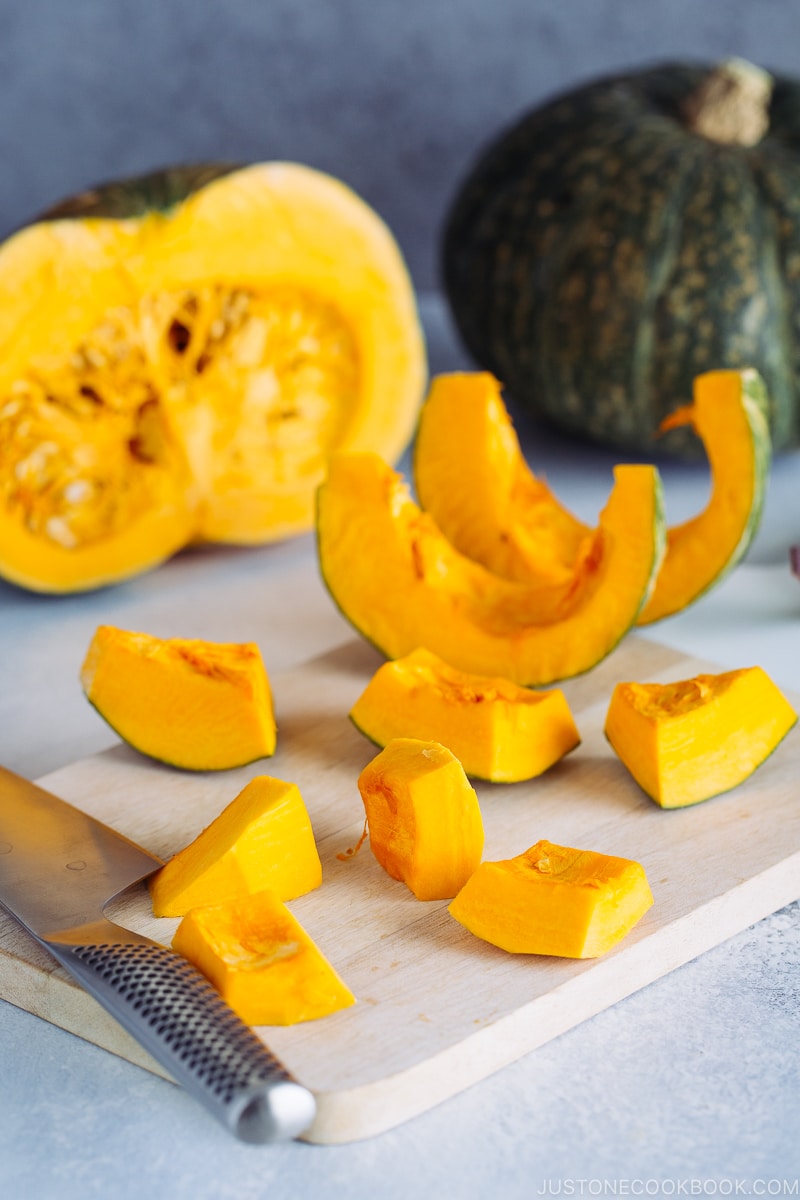
Over the years I’ve been asked by my readers on how to cut a whole kabocha squash (Japanese pumpkin) so they could enjoy the precious fall gem. So I am here to share a complete guide on how I cut a kabocha squash (including how to peel and cook), along with some of my favorite recipes.
Table of Contents
What is Kabocha Squash
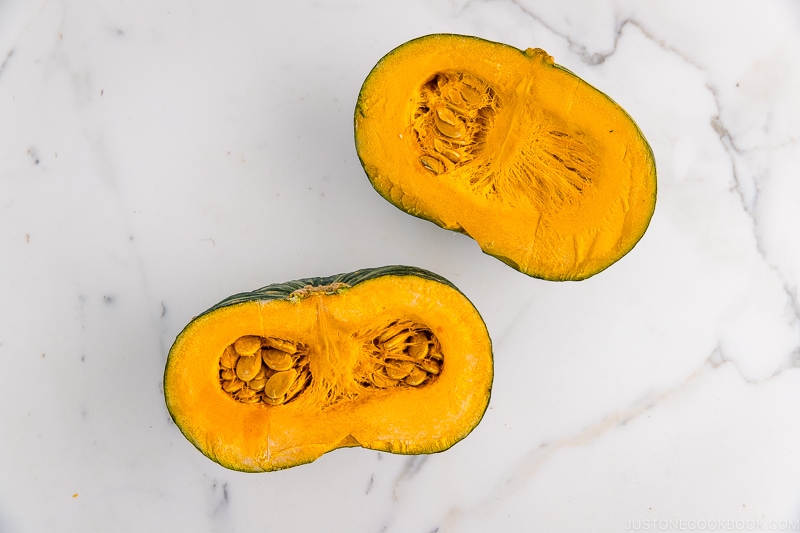
Kabocha squash, also known as Japanese pumpkin, has a thin but firm green skin and bright vivid orange flesh. Amongst the many squash varieties, kabocha probably tastes the sweetest. Its rich texture and flavor are akin to a sweet potato and a pumpkin combined. The green outer skin may look deceptively hard, but it is edible.
Kabocha is used in many Japanese recipes in which it is stewed, deep-fried into tempura, or even used in desserts. It has beta carotene, vitamins, iron, and all the healthy goodness. Japanese moms would make sure their kids eat it, and no excuse is acceptable.
How to Pick a Kabocha Squash
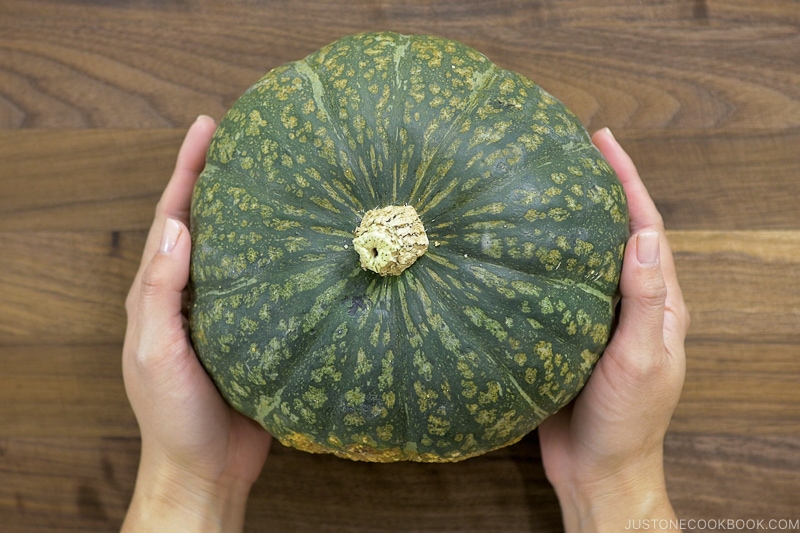
Kabocha is grown year-round, but they are best in the late summer to late fall. When picking out the perfect kabocha squash, the two most important factors to consider are color and weight.
Choose kabocha that has a firm, deep-colored green rind. Some faint stripes, bumps, or blemishes on the skin are fine. And choose ones that feel heavy for their size (usually about 2-4 lbs).
If you’re looking for a substitute for kabocha squash, you can use acorn or buttercup squash as they both have edible green skin and sweet orange flesh.
How to Store a Kabocha Squash
If you are not using the entire kabocha squash, make sure to remove the seeds and pith from cut kabocha before wrapping with plastic wrap. You can store it in the refrigerator for 2-3 days or in the freezer for a month.
You can store the whole uncut kabocha in a cool, dry, dark place for up to 1-2 months.
How to Cut a Kabocha Squash
Step 1: Pick your knife
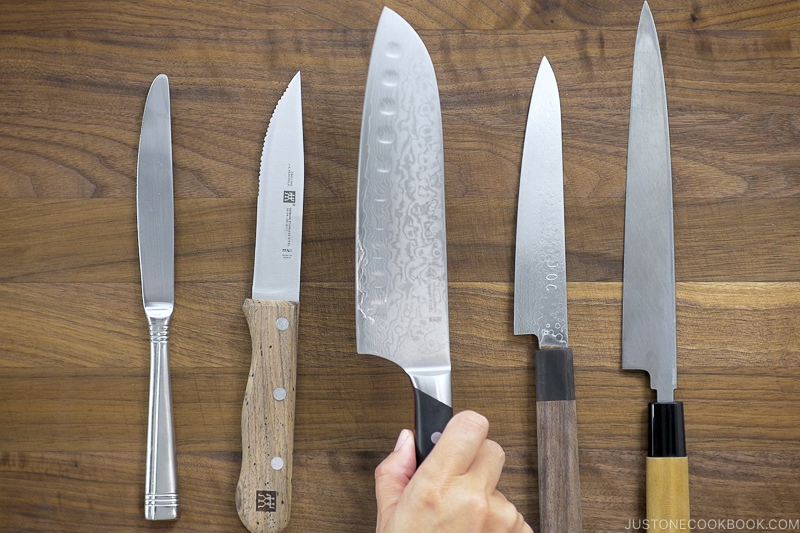
The most important tip to cut a kabocha squash is to get a large sharp knife. When you use a sharp knife, a lesser force is required to make a cut on the squash. The edge of the knife bites the object precisely while a dull knife may slip and lose control. That means a dull knife can be more dangerous than a sharp knife. It’s always good to invest in one high-quality, all-purpose chef knife (instead of buying a fancy set of knives).
Now wash the kabocha squash and dry before moving on to the next step.
Step 2: Microwave kabocha
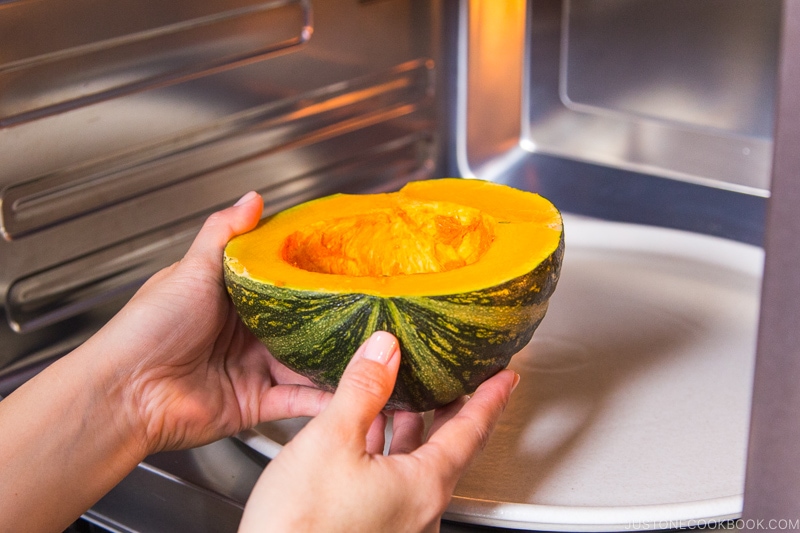
You might have already known this, but microwaving* a kabocha really helps. The microwave cooking time varies depending on the size of your kabocha, how soft you want your kabocha to be (some recipes require kabocha to be more raw than others), and your maximum microwave wattage. But it’s good to remember 2 to 4 minutes as your starting point.
And if you’re like my son, you might be wondering if the kabocha squash would explode by microwaving. Let’s say it won’t happen unless you microwave it for like 10 minutes, which I’ve never done before. If you are curious to try, I can’t guarantee what will happen.
Now if your kabocha is bigger than your microwave or you don’t own a microwave, you can either cut the whole kabocha with a large and heavy sharp knife, or you can wrap the kabocha in aluminum foil and bake in the oven at 400 ºF (200 ºC) for 15 minutes.
*Disclaimer: Thanks to the commenter Lauren, we learned that a spark may come out from microwaving kabocha. I had never experienced this personally, but it’s good to know this could happen. When you microwave, step aside to keep an eye on it.
Step 3: Remove the stem
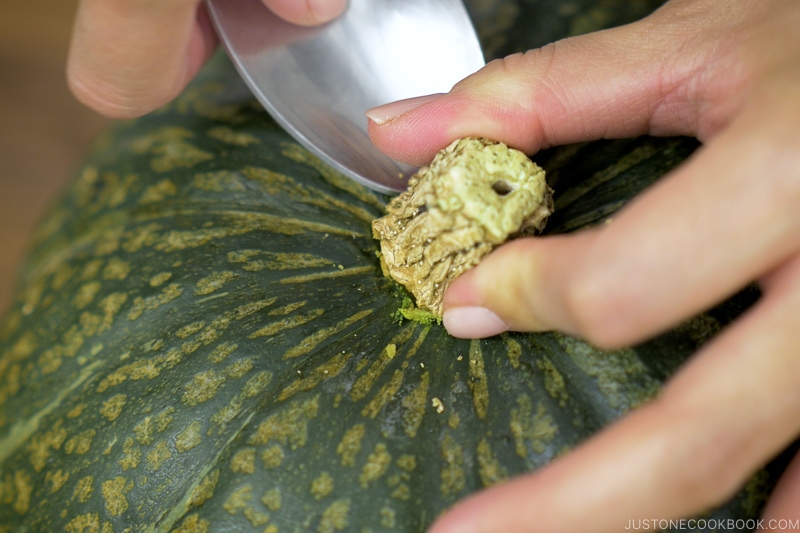
If you are slicing the whole kabocha, remove the stem first using a large spoon. Just dig in a little and it’ll pop out.
Step 4: Slice kabocha into half
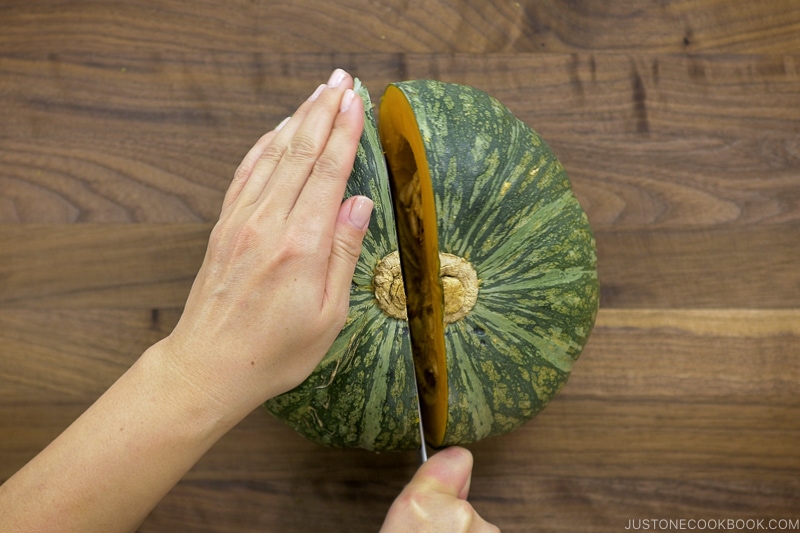
Stick the very sharp knife in the middle and work around the outside until you can cut it into two parts.
Step 5: Remove the seeds
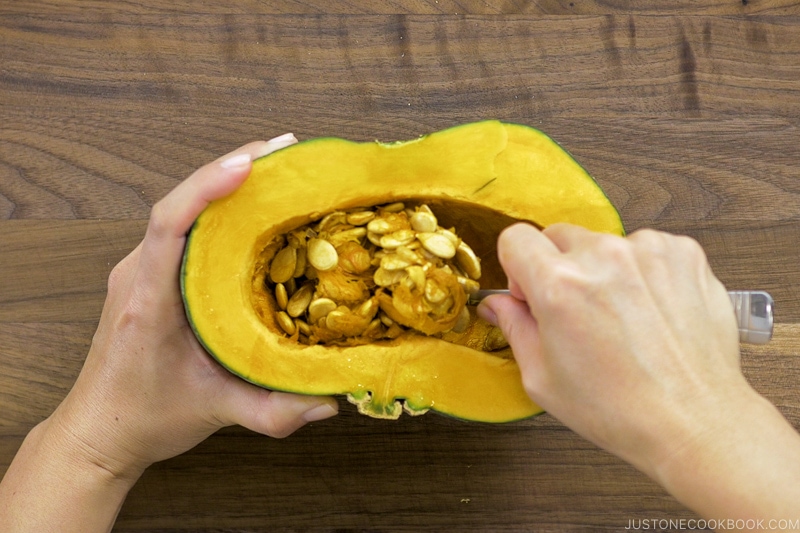
Using a large spoon, remove the seeds and pith from the core of the kabocha squash.
Step 6: Slice the halves into wedges
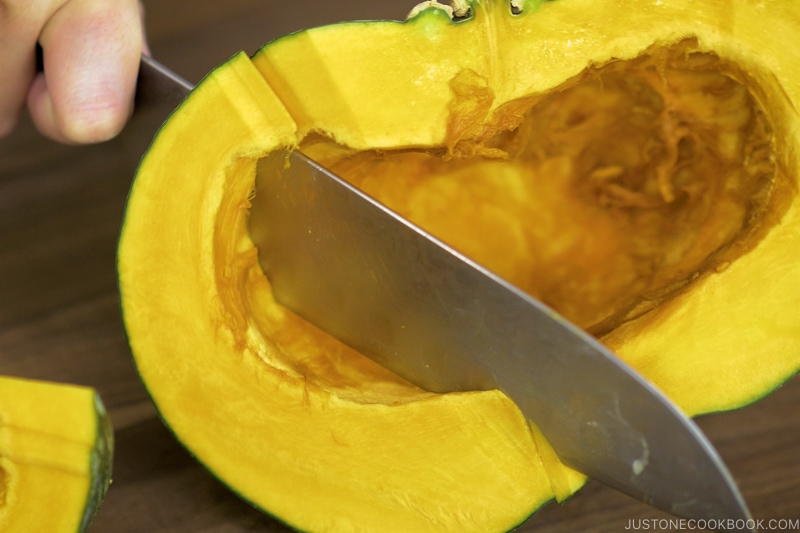
Then slice the halves into 4-6 wedges depending on your recipe. You can also cut the halves in half first before slicing into smaller wedges.
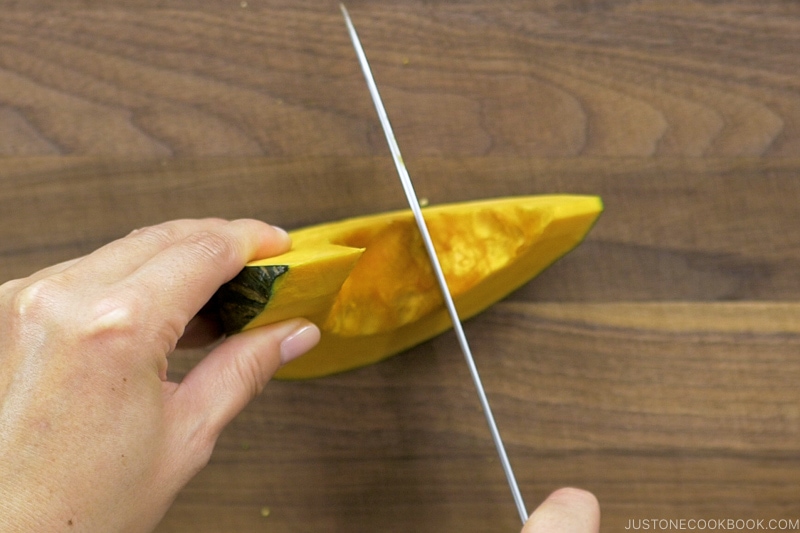
Step 7: Cut the wedges into cubes or slices
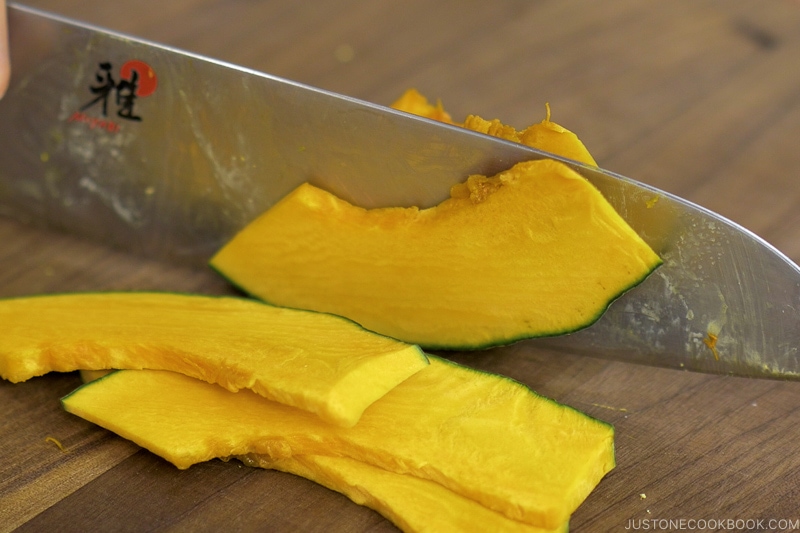
Depending on your recipe, you may need to cut the wedges into cubes or slices. Decide if you want to remove the (edible) rind for your recipe. If you decide to remove it, read the next section before you cut into cubes or slices.
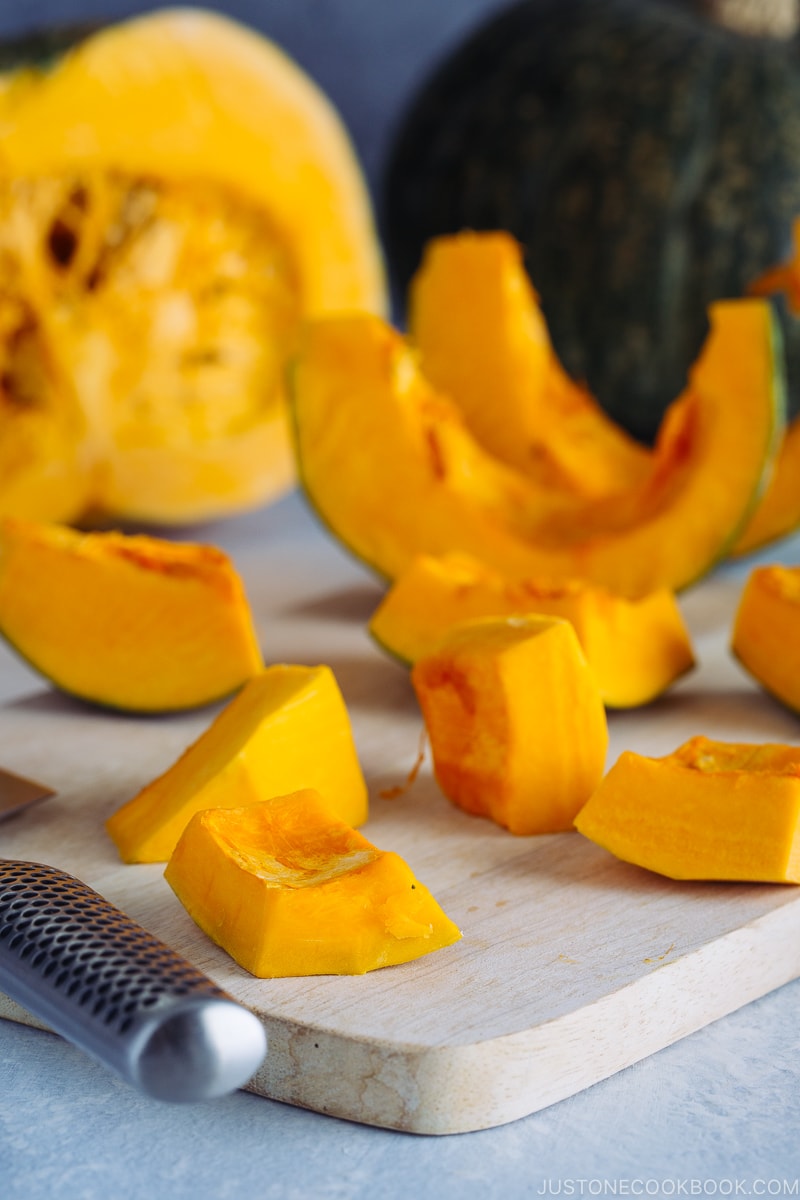
How to Peel a Kabocha Squash
The kabocha skin is edible. Many Japanese kabocha recipes such as kabocha tempura and simmered kabocha require it to keep the skin on.
However, if you want to show that beautiful orange color in your recipe, you have to remove the rind as the dark green kabocha skin will not keep the beautiful orange flesh color.
Method 1: Peel kabocha skin before cooking
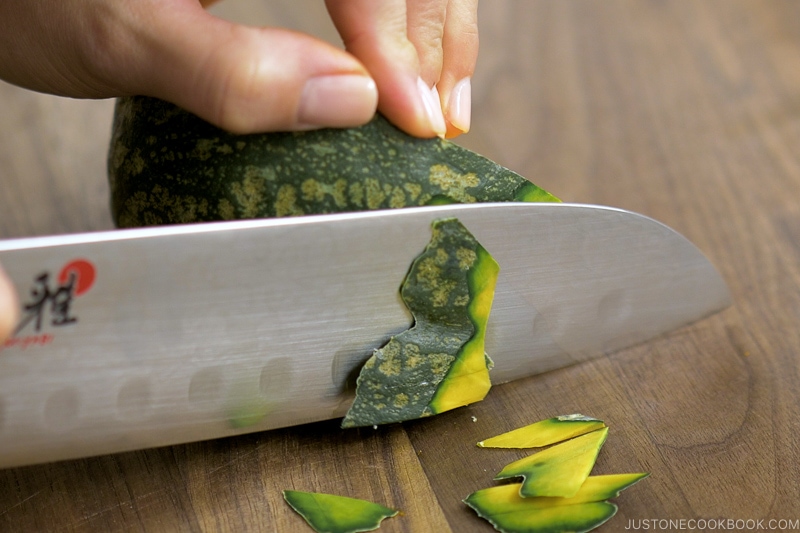
In most recipes, you will want to remove the skin first before cooking. Lay each wedge on its flat side, and slice the peel off. Then you can easily cut them into small pieces.
Method 2: Remove kabocha skin after cooking
You will most likely use this method if you want to steam and puree the kabocha for your recipe. It’s best to keep the skin when steaming so that kabocha holds its shape and doesn’t stick to your steamer basket.
Delicious Kabocha Recipes
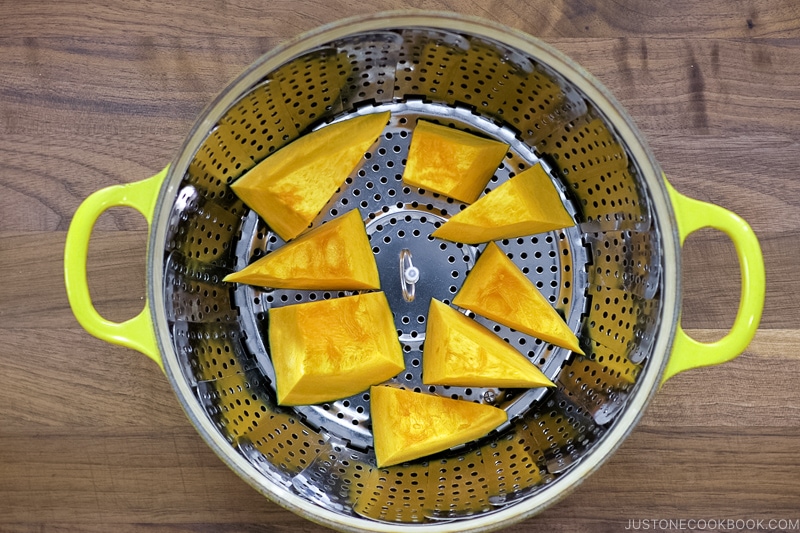
- Steaming – Steam diced kabocha squash (with skin on), remove the rind, mash the flesh, and shape into this delicious Kabocha Croquettes (Japanese Pumpkin Korokke).
- Boiling – Boil peeled kabocha cubes and mash it to make this delicious Kabocha Salad.
- Pureeing – Throw steamed cubes into a food processor/blender to make Kabocha Squash Soup and Kabocha Squash Pie.
- Simmering – When simmered slowly in a delicious broth, curry, or stew, kabocha takes on a new depth of flavor. Check out traditional Japanese Simmered Kabocha made this way.
- Stir-frying – When you’re stir frying kabocha, it’s best to keep the rind on so that kabocha slices keep in shape. Make Kabocha Pork Stir Fry to go with your rice and miso soup.
- Deep-frying – Dip your kabocha slices (with skin on) in tempura batter and deep fry to golden crisp kabocha tempura!
- Baking & Roasting – You can make your favorite casserole dishes with kabocha squash! Or toss kabocha squash with a drizzle of olive oil, salt, and pepper (or with your favorite spices and herbs) and let the oven does it work. Roasting brings out the natural sweetness of kabocha beautifully.
Kabocha Squash Recipes You’ll Enjoy


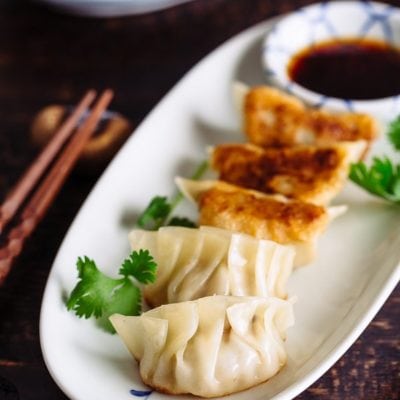
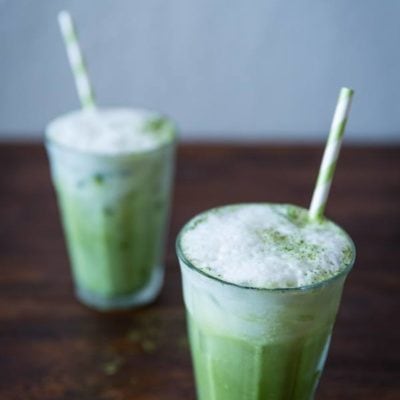

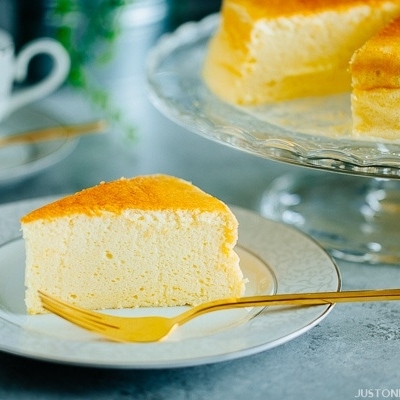
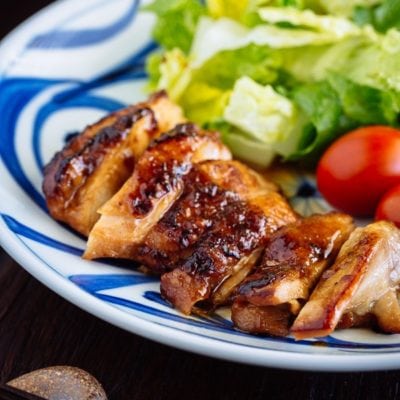
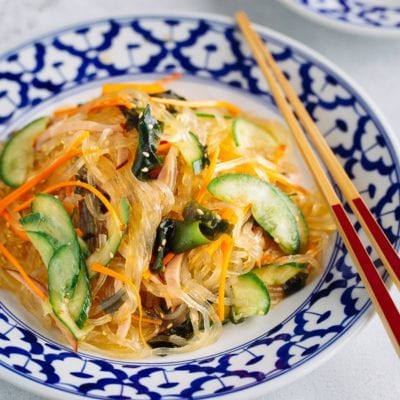
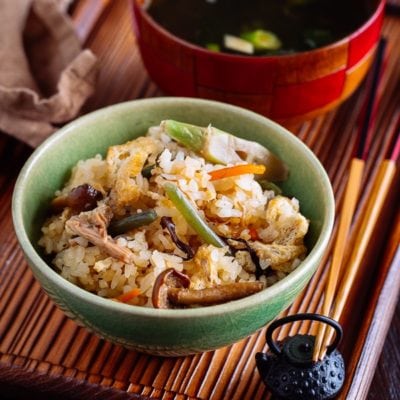
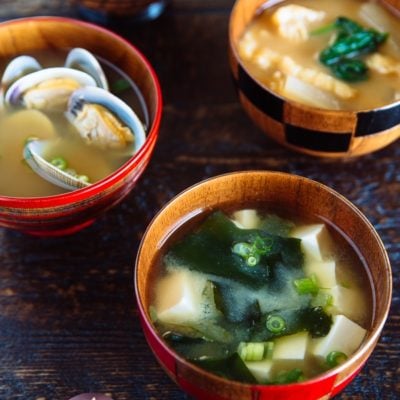

Hi Namiko! Today I found some mini kabocha squash at the grocery store. It’s so small that one could fit in my palm. So cute! Now that it’s almost autumn, I was wondering if you’ll have more recipes with kabocha squash. Maybe a stuffed mini kabocha dish? 😋
Hi Annie! Thank you very much for reading Nami’s post!
Currently, we do not have stuffed kabocha dish but here are Kabocha recipes: https://www.justonecookbook.com/search/?q=kabocha
We hope you enjoy it. 😊
Excellent article! Very helpful. Do you think I could use slices of kabocha in a tian with root vegetables such as sweet potatoes, potatoes, and carrots? Thank you for your article and thanks in advance for your assistance.
Hi Thisni, Thank you very much for reading Nami’s post and for your kind feedback!
Yes! Kabocha would work very well in a Tian! We hope you enjoy yummy Kabocha!🙂
I’ve always preferred Kabocha for curried winter squash soup. (I just cut it in half, seeded and roasted it.) This year we had volunteer vines from the compost pile and now have 15 squash on hand. Thank you for the additional ways to prepare and use it. The microwave tip is particularly helpful. By the way, they are beautiful climbing vines with huge flowers.
Hi Mary,
Thank you very much for your kind feedback!
We are so happy to hear this post was helpful, and you get to enjoy your beautiful 15 squash in many ways!
Happy cooking!
I dice it and make home fries. Fantastic with eggs over easy.
Hi Adam!
Homemade Kabocha fries and Kabocha eggs over easy are sounds delicious!
Thank you very much for sharing your cooking tips with us.😋
[…] Cut the kabocha into smaller wedges and remove the skin (See How To Cut a Kabocha Squash). […]
[…] 1. How to Cut a Kabocha Squash (Japanese Pumpkin) […]
[…] it makes sense to enjoy what the season brings forth during Tsukimi. You can find chestnuts (kuri), kabocha (Japanese pumpkin), persimmons, Japanese sweet potatoes, taro, grapes and pears and so on being served as an offering […]
[…] Steam a thin slice of Kabocha squash for 13-15 minutes (depending on thickness, cooking time varies). Kabocha is very hard to cut, so see my tutorial on How to Cut Kabocha Squash. […]
[…] Here, I cut kabocha squash quite big, but you will roughly need 2 tsp mashed kabocha if you are making just 2 yellow balls. Steam a thin slice of Kabocha squash for 13-15 minutes (depending on thickness, cooking time varies). Kabocha is very hard to cut, so be careful and see my tutorial on How to Cut Kabocha Squash. […]
[…] Microwave the kabocha for 2 minutes and remove seeds and pith from the kabocha. To learn more about how to cut kaboha squash, click here. […]
I just tried this and within about 15 second the kabocha was on fire in my microwave.
Hi Lauren! Did you put ONLY bare kabocha? It’s hard to believe it gets on fire. No aluminum foil or anything in there right, just a whole or half kabocha?
I put the entire kabocha squash with nothing else in the microwave. After a few seconds, a 2-3 inch flame was shooting out the top of the squash. Luckily it went away as soon as I opened the microwave door, but it was pretty scary.
Hi Lauren! Thank you so much for letting me know! I googled and this “could” happen!
https://curiosity.com/topics/heres-why-fruit-and-vegetables-spark-in-the-microwave-curiosity/
Thanks to your feedback, I could put the disclaimer in my blog post. I have had microwave kabocha many times without this issue, but you tried it for the first time and got a spark in the microwave. This could happen to anyone! Thank you so much again, Lauren!
This same thing just happened to me!!!
Thank you for sharing, I should have watched this before I made my kabocha soup a couple of nights ago! I had not cooked kabocha in a while and made a mess as well as getting a cut on my finger….
Hi Eriko! Oh no, your finger got injured… 🙁 It’s so easy to slip a knife while cutting a hard object. Hope it’s healed by now… xo
Try this method for delicious kabocha treats;
Cut the squash in 1 to 2-inch wedges.
Use your hands to smear melted coconut oil all over each wedge, including skin.
Sprinkle very lightly with salt.
Roast at 425 f. degrees until soft, 15 to 25 minutes, depending on size of wedges.
Serve warm or refrigerate for incredible snacks.
Hi Mara! Thank you for sharing the delicious recipe with us!
The music to the video was a brilliant choice – it made cutting kabocha really exciting and dramatic!! Great idea to give us so many ways to prepare kabocha in one video. Thanks, Nami!
Hi Wendy! Thank you for your kind words and I’m so glad you liked this video. 🙂
Would you recommend that I freeze uncooked but prepped kabocha? Will it impact the textured once I thaw and cook?
Love you blog and blogs!
Jennifer
Hi Jennifer! Yes, you can do that. I recommend to cut into cubes or sliced and then freeze. The texture shouldn’t change much. I’ve done it before. 🙂 Thank you so much for reading my blog, Jennifer. xo